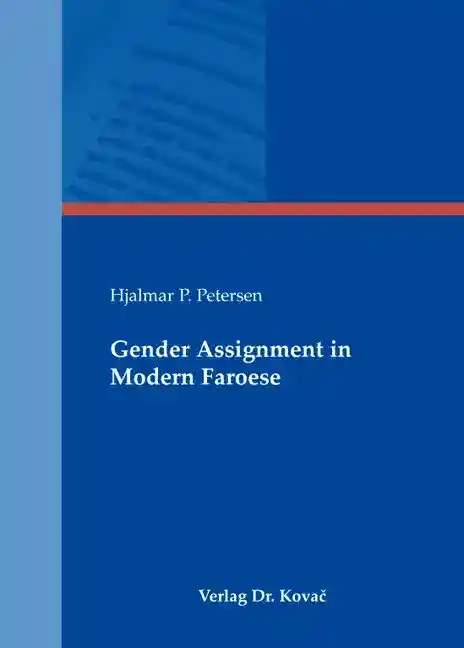Hjalmar P. PetersenGender Assignment in Modern Faroese
PHILOLOGIA – Sprachwissenschaftliche Forschungsergebnisse, Band 133
Hamburg 2009, 354 Seiten
ISBN 978-3-8300-4358-4 (Print) |ISBN 978-3-339-04358-0 (eBook)
Rezension
[...] Insgesamt gelingt es Petersen sehr gut, die Genussystematik des Färöischen offenzulegen, was für den Fremdsprachenerwerb nicht hoch genug eingeschätzt werden kann. Gleichermaßen werden zukünftige Grammatiken zum Färöischen von Petersens anregender Darstellung in erheblichem Maße profitieren.
Zum Inhalt
This monograph is the first of its kind to deal specifically with gender assignment in a North Germanic language.
A long upheld view in linguistics was that gender was totally arbitrary, but the present study shows that this is not the case. On the contrary, gender is rule based, where semantic rules usually take precedence over morphological rules; that is the Gender Assignment Hierarchy. When exceptions are found, they are in a limited set, as when small animate beings are neuter instead of masculine.
It is shown how the Assignment Hierarchy works for Faroese, and there is adiscussion of the difference between lexical gender and referential gender (or deictic and anaphoric reference). In addition to this the Core Semantic Override Principle is presented and exceptions to this principle are shown to be semantically motivated.
It is shown that gender assignment is twofold in Faroese, semantic assignment at the lemma level and morphological assignment at the level of the lexeme. Support for the different rules is found in different historical changes, borrowings and in three psycholinguistic test that were done.
In addition to different semantic rules, where gender follows biological sex, other semantic rules that apply for inanimate nouns are presented, some never seen before, and we do show that morphological assignment has two mechanisms: overt assignment and covert assignment. This is all supported by the psycho-linguistic findings and historical changes.
When discussing the morphological rules, it is shown that there is a difference between noun inflection in Faroese and gender assignment in that a noun has, in addition to class membership, eight independent gender markers, and the division between controller genders and target genders plus the different rules, morphological and semantic, shows how gender is an ordering principle requiring agreement, and that it thus divides the Mental Lexicon into classes which governs agreement.
Schlagworte
FaroeseGender AssignmentGender Assignment RulesMorphologyRule Based Gender AssignmentSemanticSprachwissenschaftIhr Werk im Verlag Dr. Kovač

Möchten Sie Ihre wissenschaftliche Arbeit publizieren? Erfahren Sie mehr über unsere günstigen Konditionen und unseren Service für Autorinnen und Autoren.
